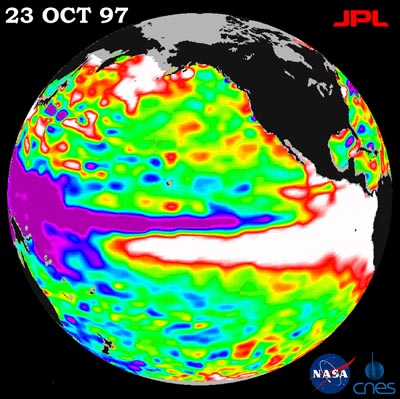
| Year | Length | Effects | 1997 | 1 year | Heavy rains in the Southeast, massive fish kills in Peru, unusually mild and dry Northern winter. Very few hurricanes in the Atlantic | 2002 | 1 1/2 years | Weaker than the 1997-98 El Nino. Somewhat moist winter in the Southeast, but chilly, and very mild western US, less hurricanes in the Atlantic | 2006 | 1 year | About the same strength as in 2002, very mild winter in Northern states, but rather snowy once the 32 degree threshold was reached. Very few Atlantic hurricanes. |
|---|
A very weak El Nino also occurred in 2004-05. It only lasted a few months, from October 2004 to March 2005, not giving the Atlantic any chance to rest between storms.
El Ninos have occurred since at least 1950, with an occurrence every three to five years, on average.1 There was a period in the 1970s where El Ninos were quite rare, but La Ninas became more common. That was a time of generally colder winter conditions in much of the United States.
Tropical Pacific water temperatures in 1998 were 1 and1/2 degrees above normal.
This is not the only time that temperatures were above normal, there was a Medieval Climatic Optimum, in which temperatures were warmer than today. In general, El Nino brings warmer conditions, and La Nina brings colder conditions.
1Source: National Weather Service Climate Prediction Center
Back to Page OneThis site is © and ® 2007 by Thomas Eskew.